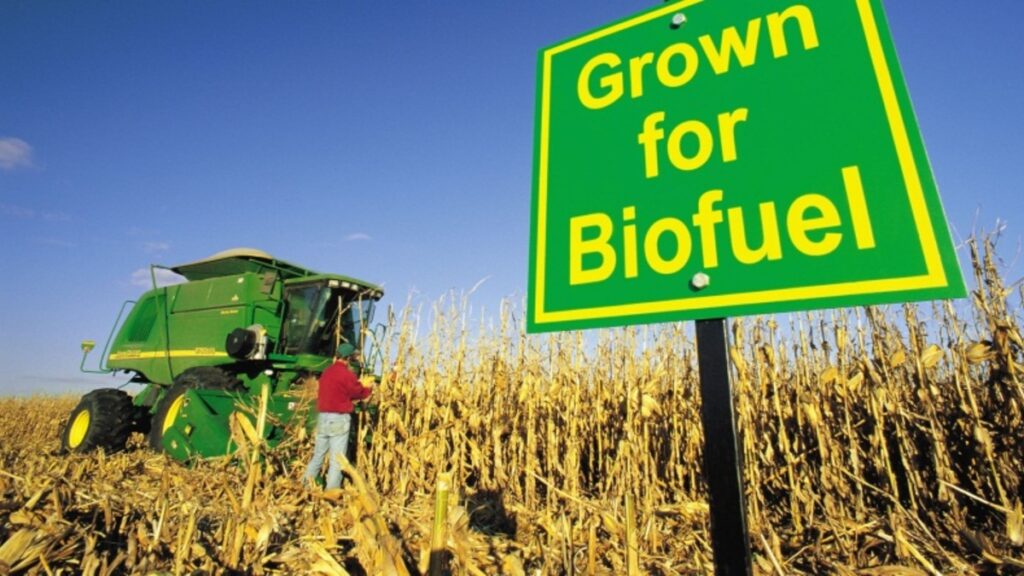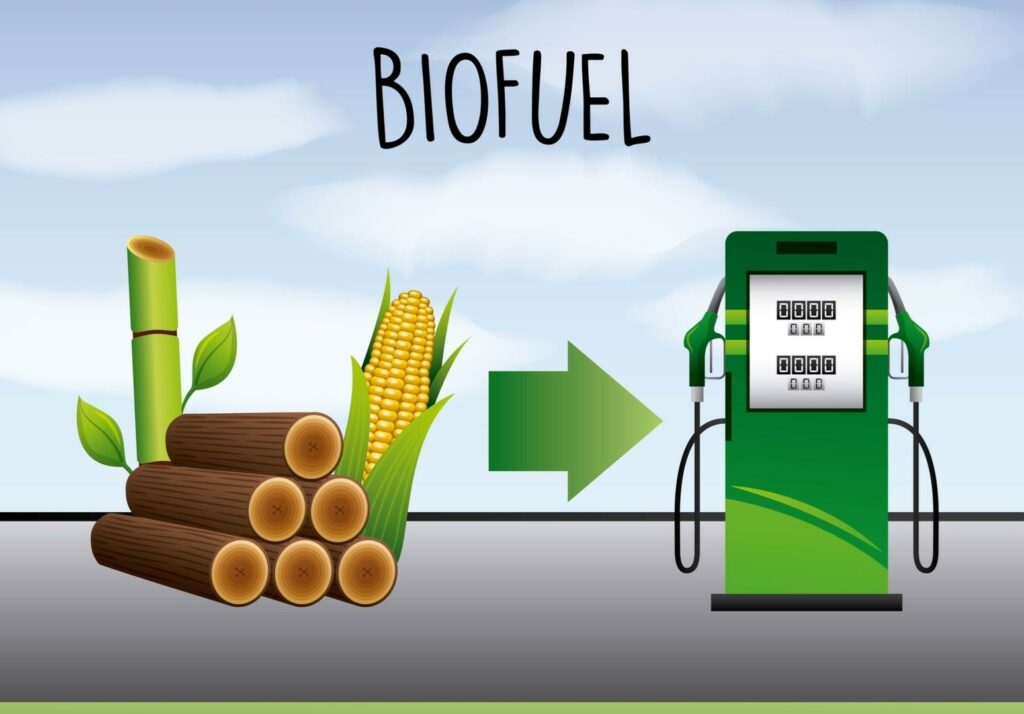Останнім часом у світовій пресі все частіше з’являються повідомлення про небезпеку і навіть шкідливість масового переведення автомобілів на біоетанол. Одна авторитетна думка дуже швидко заперечується іншою, не менш авторитетною. Критика настільки жорстка, що неминуче викликає збентеження. Як це може бути: провідні країни приймають енергетичні стратегії, які, якщо вірити скептикам, є абсолютно необдуманими і є найкоротшим шляхом до масштабних екологічних та економічних катастроф? Де правда? Давайте спробуємо розібратися.
Противники спалювання етанолу в двигунах внутрішнього згоряння наводять переконливі аргументи. Вони не спростовують той факт, що вихлопи автомобілів стають набагато чистішими при використанні етанолу. Це правда. Основна проблема полягає у виробництві самого виду палива, коли в атмосферу викидається величезна кількість вуглекислого газу. Це означає, що вся екологічна ефективність зводиться до нуля. І сміливі гасла про боротьбу з глобальним потеплінням, про зміну клімату не тільки втрачають свою актуальність, але навіть стають смішними.
Вони праві? І так, і ні. Виробництво етанолу дійсно насичує атмосферу парниковими газами в кількостях, порівнянних з викидами бензинових двигунів внутрішнього згоряння. Але кожна медаль має дві сторони. Справа в тому, що при виробництві і спалюванні 1 літра етанолу з рослинної сировини в атмосферу потрапляє рівно стільки ж СО2, скільки було раніше поглинено тими ж рослинами в результаті реакції фотосинтезу. Насправді виробництво етанолу є не що інше, як «зворотний фотосинтез», з тією лише різницею, що в одному випадку потрібне сонячне світло, а в іншому виділяється тепло.

Виявляється, біоетанол абсолютно нейтральний як джерело парникових газів. Це означає, що від нього не стане краще, але й не стане гірше, на відміну від нафтопродуктів. У етанолу є ще одна перевага: позитивний енергетичний баланс. Залежно від виду сировини останній може коливатися від 1,24 до 8. Тобто при спалюванні етанолу виділяється в кілька разів більше енергії, ніж витрачається на його виробництво. У цьому сенсі «скандальне паливо» на порядок перевершує бензин або дизель. Тільки уявіть витрати на розвідку, видобуток, транспортування та переробку нафти, і ви зрозумієте, що паливний баланс нафтопродуктів набагато менше одиниці.
Але C2H5OH також має свої недоліки. При спалюванні 1 літра етанолу виділяється на 34% менше енергії, ніж при спалюванні такого ж об’єму бензину. Виявляється, якщо заправляти автомобіль паливом, що містить етанол (наприклад, широко розкручена суміш Е85 з бензином), то витрата палива неминуче зросте до цих самих 34% — все буде залежати від концентрації алкоголю в кожному конкретному випадку. . Але з такою сумною картиною зіткнуться лише власники автомобілів з двигунами, спочатку розробленими на традиційному бензині і лише потім адаптованими на новомодне паливо.
Не можна забувати, що октанове число етанолу становить 105. Це означає, що його можна спалювати в двигунах зі значно більшим ступенем стиснення. Так що в принципі двигуни, призначені виключно для нового джерела енергії, повинні бути не гірше нинішніх бензинових або дизельних аналогів. Як за ККД, так і за силовими характеристиками. А про екологію годі й говорити! Викиди вуглекислого газу зменшуються приблизно на 80%, а саме CO2 – на 30%. Але закачувати бензин в такі машини категорично не можна — детонація моментально вб’є технологічний двигун.
У цьому сенсі перспективи так званих багатопаливних (найчастіше біпаливних) автомобілів виглядають дуже песимістично. Вони можуть називатися Flex Fuel, Flexifuel, BioFlex, Tri-Flex і як завгодно — все залежить від фантазії виробників. Причому, якщо деякі з цих розробок мають статус концептів, то інші є цілком серійними автомобілями. Але у всіх цих автомобілів є один неприємний недолік – етанол там спалюється неефективно, тому що ступінь стиснення не можна змінити простим натисканням кнопки на панелі.
Кумедна ситуація: на бензині Flexifuel автомобіль їде добре, а на E85 (якщо хтось забув, це коктейль з 85% етанолу і 15% бензину), по-перше, погано їде, а по-друге, «їсть». ” значно більше. Так, біоетанол дешевший за бензин, але ненабагато. Не варто думати, що на такому паливі ви заощадите якусь значну суму. Може навіть статися так, що будуть лише збитки. Залежно від того, як керувати автомобілем – лише «зелена» орієнтація допоможе вам дістатися далеко. Тому не дивуйтеся, що впровадження, здавалося б, багатообіцяючої ідеї супроводжується законодавчим регулюванням, наприклад, у США та Бразилії.
Варто зменшити темп і поговорити докладніше, тому що впровадження біоетанолу в цих країнах зайшло дуже далеко. Бразильці дуже несхильно ставляться до паливних криз з 1973 року. І всіляко намагаються їм запобігти. Так, з 1975 року в країні діє масштабна біопаливна кампанія. Тому не дивно, що 4,5% площі Бразилії займають плантації цукрової тростини, а більшість місцевих автомобілів можна з чистою совістю віднести до звичних п’яниць. Мільйон бразильських робітників виробляє понад двадцять мільярдів (!) літрів етанолу на рік.
Економіку цієї країни ніяк не можна назвати залежною від нафти. Бразилія повністю забезпечує себе паливом і електроенергією за рахунок вирощування і переробки цукрової тростини. Все це, звичайно, радує, але в бочці зі спиртом є місце і для всюдисущої смоли. Заради нових плантацій бразильці вирубують ліси Амазонії. Можна назвати це дивною і недалекоглядною політикою, але, прямо кажучи, це справжній ідіотизм. Як жити без «легенів планети»?
Схожа ситуація складається і в США. За останні роки інвестиції тільки в дослідження виробництва етанолу перевищили 12 мільярдів доларів. І це лише початок.

Хоча в Америці виробляється багато етанолу, все ж трохи менше, ніж у Бразилії. Щоправда, виготовляють його не з тростини (вона не хоче рости в США), а з кукурудзи. Цей варіант менш ефективний, тому вартість американського етанолу вище, ніж бразильського. Тим не менш, програма активно просувається владою багатьох штатів, і «кукурудзяний» Іллінойс не став винятком. Вводяться нові вимоги до бензинового палива, яке має містити 10% етанолу (ця пропорція безпечна для традиційних двигунів).
Чи досягнуть американці своїх цілей? Яке майбутнє всієї цієї справи з біоетанолом? Поки що все розпливчасто. Ясно одне – розраховувати на повний перехід на спиртові двигуни нереально. Якщо припустити стовідсоткову ефективність процесу переробки, то для того, щоб США перейшли з нафти на етанол, 75% сільськогосподарських угідь нашої планети повинні бути засіяні відповідними культурами. Грубо кажучи, якщо весь Місяць засіяти цукровою тростиною, цього буде недостатньо.
Масове вирощування сільськогосподарських культур для виробництва етанолу неминуче матиме значний вплив на сільське господарство. Аграрії не дурні – оскільки попит на кукурудзу зростає, то сіятимуть, де зможуть. А хто подумає про мільйони голодуючих жителів Землі? Тому багато дослідників обурюються, стверджуючи, що «вирощувати» біопаливо в той час, коли людям нічого їсти, є низьким, підлим і взагалі аморальним заняттям.
Однак до будь-якої критики слід ставитися з достатньою часткою скептицизму. Біопаливні програми самі по собі цілком розумні і при правильному виконанні можуть принести відчутну користь. Варто тільки пам’ятати, що широке впровадження етанолу матиме відчутний вплив на світову економіку. І, звичайно, будуть ті, чиї інтереси будуть зачеплені. Приклад: так званий саміт «тютюнових королів» 1988 року, де керівники найбільших компаній обговорювали, як нейтралізувати політику ВООЗ проти куріння. І чи є гарантія, що всі ті, хто відчував загрозу для нафтового бізнесу, зараз не вдаються до таких дій? Адже, як не крути, впровадження біопалива – це не стільки науково-економічне питання. Тут грає роль велика політика.

Це переклад. Оригінал можна прочитати тут: https://www.drive.ru/technic/4efb331a00f11713001e3994.html

Опубліковано Грудень 09, 2021 • 6хв на читання






